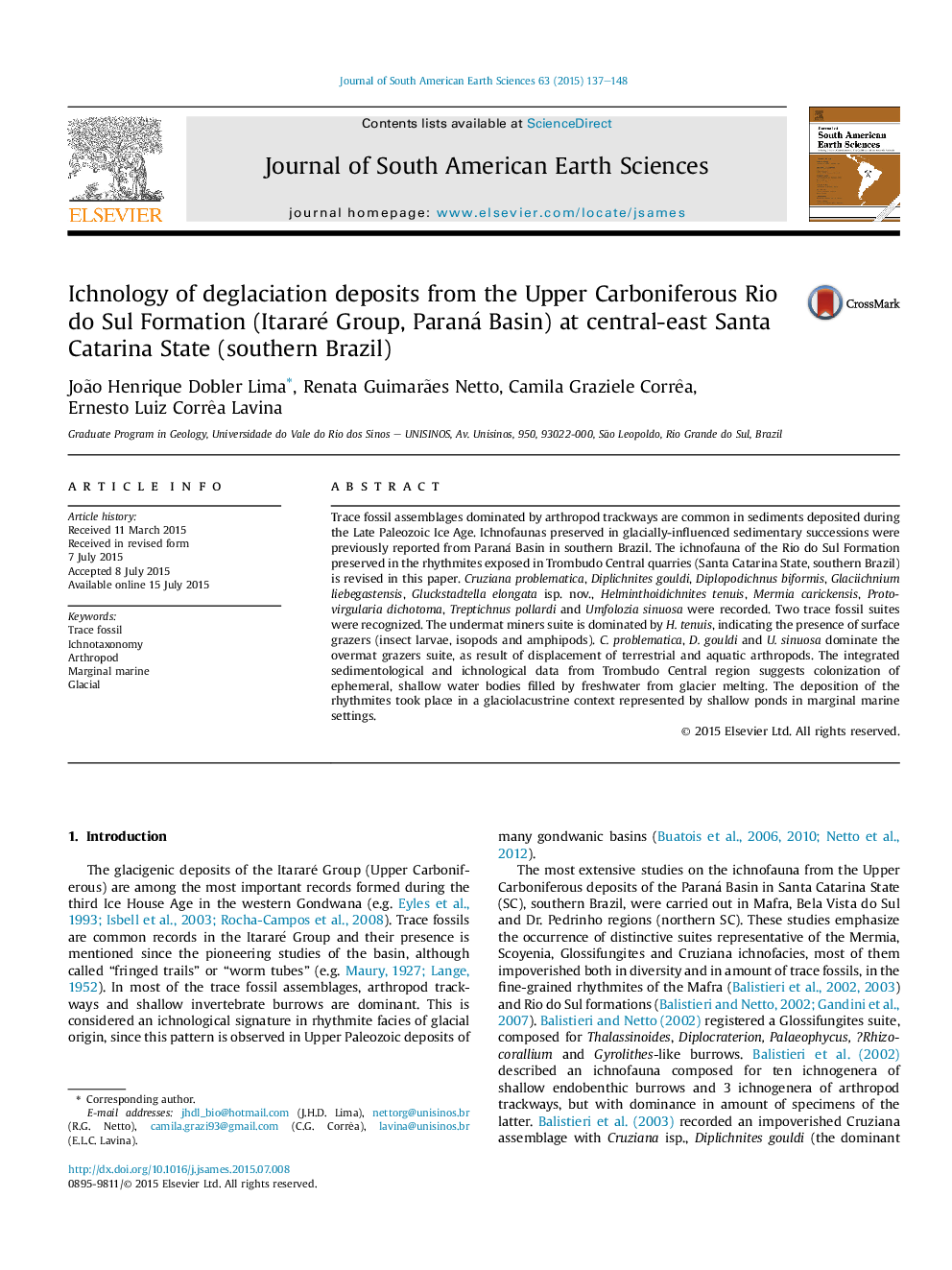| کد مقاله | کد نشریه | سال انتشار | مقاله انگلیسی | نسخه تمام متن |
|---|---|---|---|---|
| 4682156 | 1635146 | 2015 | 12 صفحه PDF | دانلود رایگان |

• We describe ten ichnospecies belonging to ten ichnogenera in the study area.
• Two trace fossil suites were recognized according to the palaecological niches.
• Terrestrial and aquatic arthropods were the colonizers of the substrate.
• Freshwater fluxes originated the deposits during melting of Gondwana glaciers.
• We assume a glaciolacustrine context of shallow ponds in marginal marine setting.
Trace fossil assemblages dominated by arthropod trackways are common in sediments deposited during the Late Paleozoic Ice Age. Ichnofaunas preserved in glacially-influenced sedimentary successions were previously reported from Paraná Basin in southern Brazil. The ichnofauna of the Rio do Sul Formation preserved in the rhythmites exposed in Trombudo Central quarries (Santa Catarina State, southern Brazil) is revised in this paper. Cruziana problematica, Diplichnites gouldi, Diplopodichnus biformis, Glaciichnium liebegastensis, Gluckstadtella elongata isp. nov., Helminthoidichnites tenuis, Mermia carickensis, Protovirgularia dichotoma, Treptichnus pollardi and Umfolozia sinuosa were recorded. Two trace fossil suites were recognized. The undermat miners suite is dominated by H. tenuis, indicating the presence of surface grazers (insect larvae, isopods and amphipods). C. problematica, D. gouldi and U. sinuosa dominate the overmat grazers suite, as result of displacement of terrestrial and aquatic arthropods. The integrated sedimentological and ichnological data from Trombudo Central region suggests colonization of ephemeral, shallow water bodies filled by freshwater from glacier melting. The deposition of the rhythmites took place in a glaciolacustrine context represented by shallow ponds in marginal marine settings.
Figure optionsDownload as PowerPoint slide
Journal: Journal of South American Earth Sciences - Volume 63, November 2015, Pages 137–148